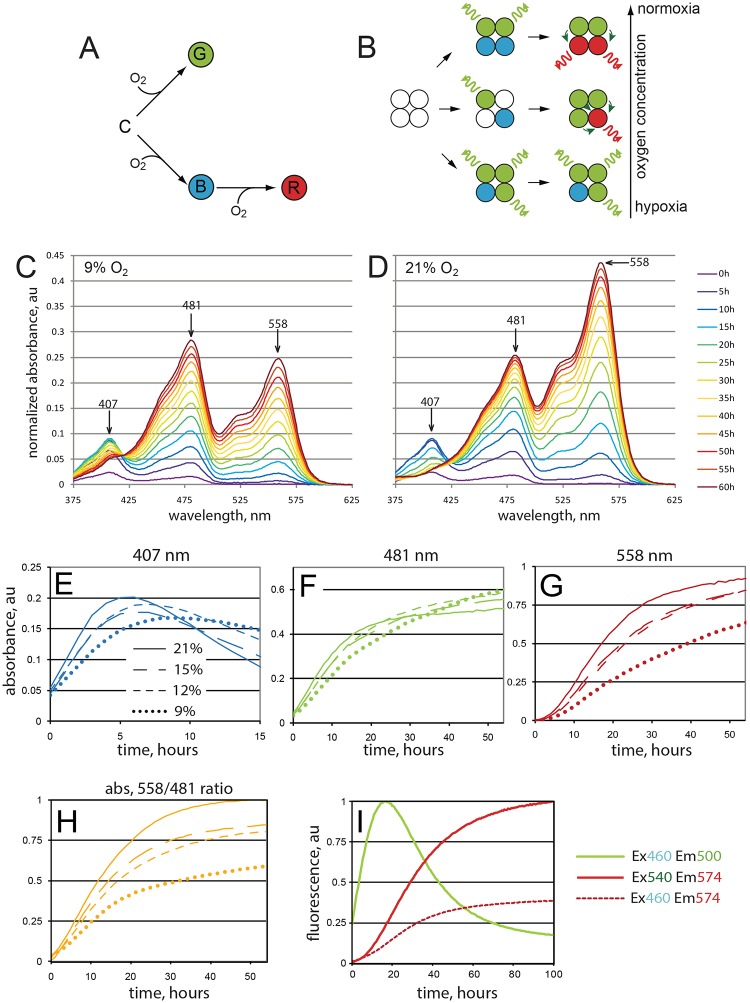Fig. 1.
Fluorescence color changes during maturation of DsRed FT. (A) DsRed FT maturation can occur via distinct oxygen-dependent pathways that generate fluorophores emitting the indicated colors. (B) Efficient FRET from green to red fluorophores (bent arrows) in tetramers quenches the emission (wavy arrows) of green but not red fluorophores. Quenching further enhances the differential oxygen dependence of the two maturation pathways, resulting in a very high oxygen sensitivity of the red-to-green fluorescence ratio. (C,D) Oxygen concentration affects in vitro DsRed FT maturation into spectroscopically distinct forms. Newly synthesized DsRed-FT was purified and exposed to 9% (C) or 21% (D) oxygen. Absorbance spectra were determined at the indicated time points. (E-G) Maturation dynamics of distinct isoforms. Whereas the green isoform (F) is relatively insensitive to oxygen concentration, the blue (E) and red (G) isoforms are strongly dependent on oxygen. (H) Ratio of red/green isoforms depends on oxygen concentration. (I) Fluorescence of the green isoform declines with an increase of red fluorescence. Excitation and emission values used are shown. Note the increase of red (Em574 nm) fluorescence excited by blue (Ex460 nm) light (dashed line). This signal largely corresponds to the intratetrameric FRET. The experiment was performed at normoxic conditions. A representative experiment out of three replicates is shown.

